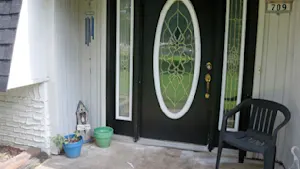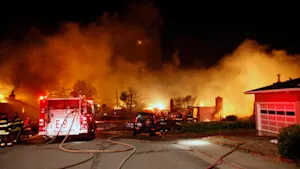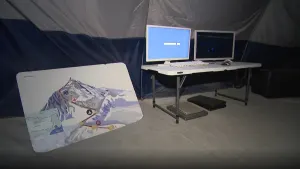AAA warns of potential dangers on the road as daylight saving time ends
The annual "Fall Back" means sun glare for the morning commute, darkness for the evening commute and potential for drowsy drivers.
•
Nov 7, 2021, 2:52 PM
•
Updated 1,435 days ago
Share:
More Stories
1:31

What's Cooking: Uncle Giuseppe's Marketplace's prime rib roast
291ds ago1:30

Looking for a road trip? Check out Big Snow at American Dream in East Rutherford
487ds ago1:27

What's Cooking: Uncle Giuseppe's quiche lorraine
523ds ago2:34

Guide: Safety tips to help prevent home burglaries
587ds ago2:19

Guide: Safety measures to help prevent fires and how to escape one
735ds ago2:36

Looking for a road trip? Check out Trap Door Escape Room in Red Bank
760ds ago1:31

What's Cooking: Uncle Giuseppe's Marketplace's prime rib roast
291ds ago1:30

Looking for a road trip? Check out Big Snow at American Dream in East Rutherford
487ds ago1:27

What's Cooking: Uncle Giuseppe's quiche lorraine
523ds ago2:34

Guide: Safety tips to help prevent home burglaries
587ds ago2:19

Guide: Safety measures to help prevent fires and how to escape one
735ds ago2:36

Looking for a road trip? Check out Trap Door Escape Room in Red Bank
760ds agoAAA warns the end of daylight saving time could mean an uptick in driving dangers.
As the clocks fell back an hour late Saturday, AAA is reminding drivers to be prepared for potential challenges behind the wheel.
The annual "Fall Back" means sun glare for the morning commute, darkness for the evening commute and potential for drowsy drivers.
Because of stay-at-home orders at the height of the coronavirus pandemic, there were less drivers on the roads around this time last year. But as people start to head back to in-person activities like going to work, they are all going to share the road again, which increases the risk for potential challenges behind the wheel like lack of sleep.
AAA says 95% of drivers agree that drowsy driving is dangerous, but 17% of drivers admit to having driven while being so tired that they had a hard time keeping their eyes open at least once in the past month.
According to the National Sleep Foundation, sleep deprived drivers cause over 6,000 driving deaths and 50,000 debilitating injuries each year.
AAA says although we gain an hour of sleep, our sleep patterns are disrupted, and this can result in unsafe driving.
AAA suggests slowing down, especially at night, putting more space between your car and the car in front of you, turning on your headlights to make yourself more visible to other drivers and to also illuminate the road ahead of you.
To combat sun glare, a pair of sunglasses is also advisable.
New Jersey is one of two states that have laws that address sleep deprived drivers who injure or kill someone. Motorists found to have been driving without having gotten sleep in 24 hours can be charged with vehicular homicide.
More from News 12
2:45

Thunderbolt 12: Heavy rain and high tides causing flooding along Jersey Shore
0:33

Wawa dethroned as America’s top convenience store
2:27

NJ’s Least Favorite Roadways: No. 5 - I-80
0:26

NYC Columbus Day parade canceled due to nor’easter
0:36

Hamas releases all 20 remaining living hostages as part of Gaza ceasefire
0:21
